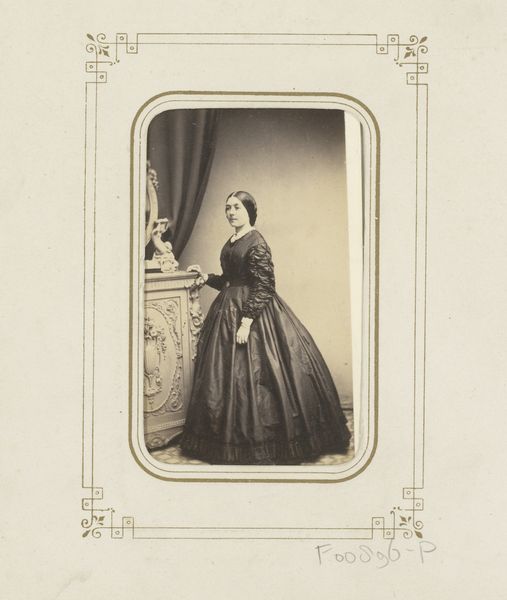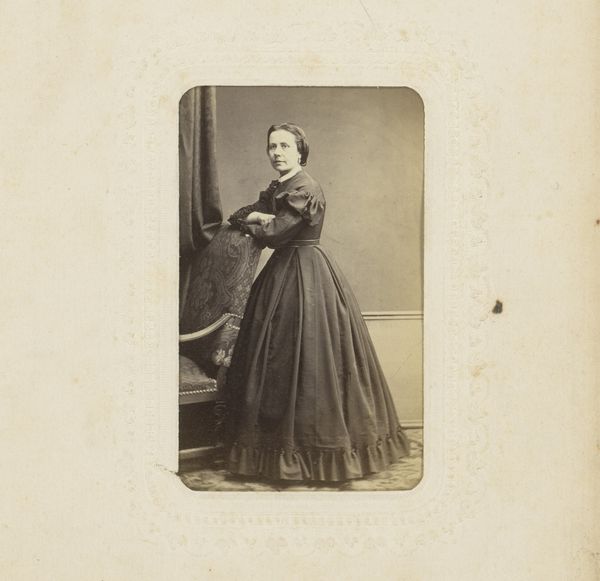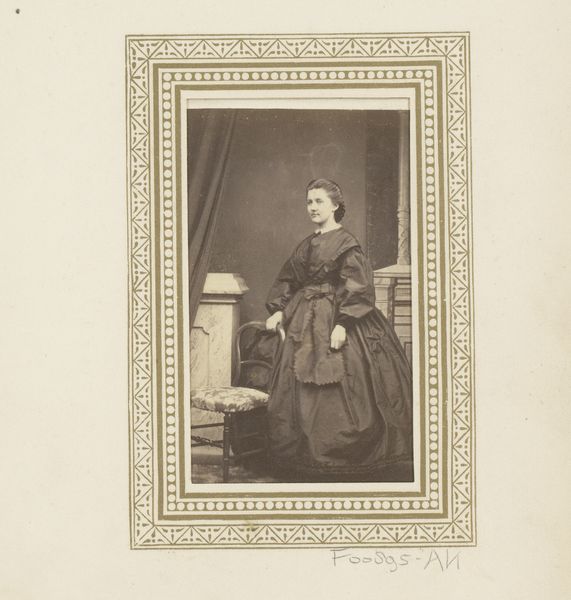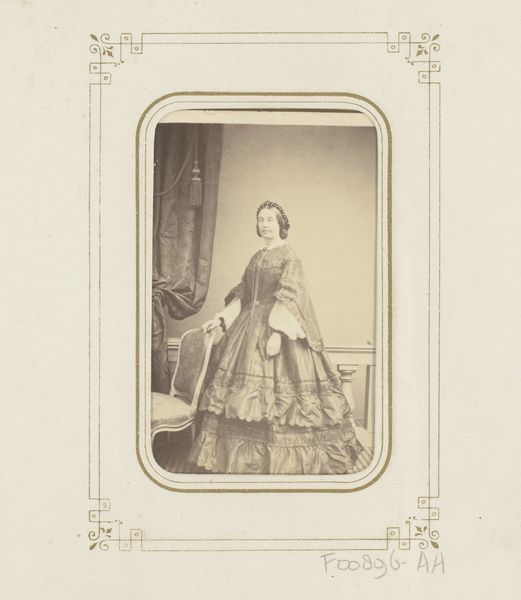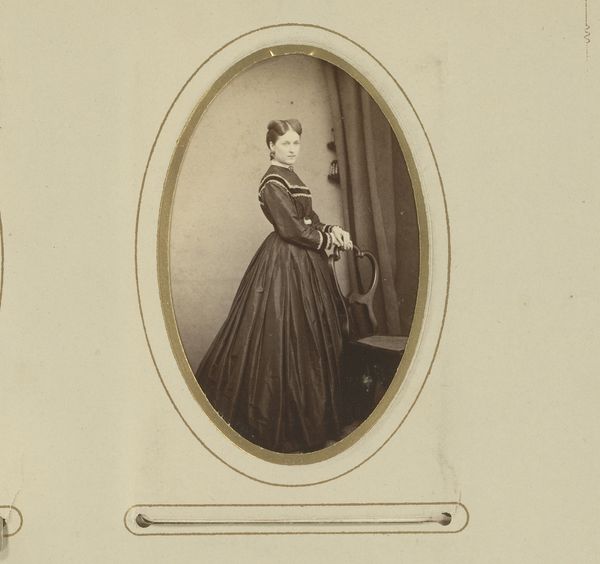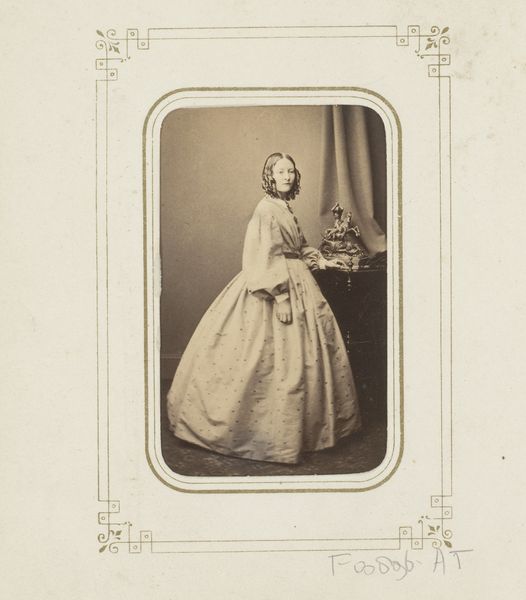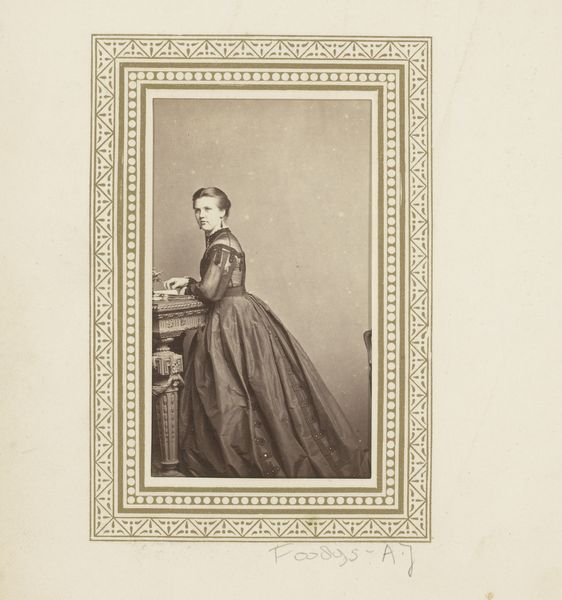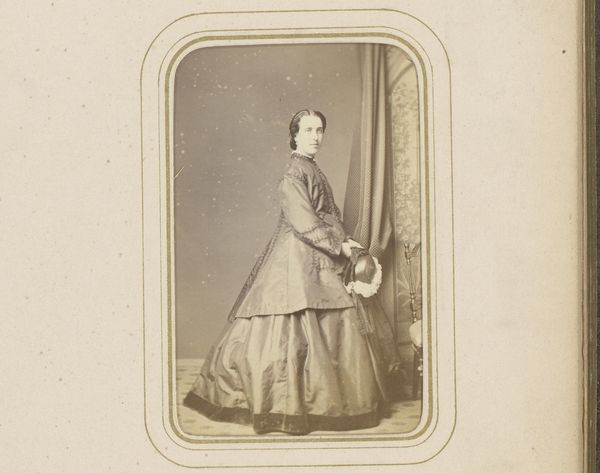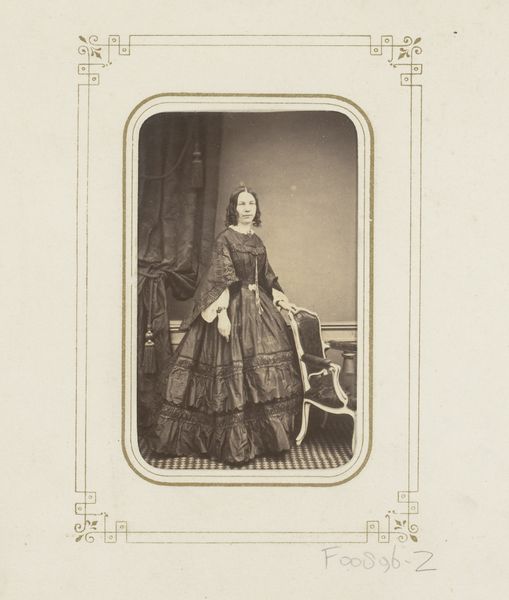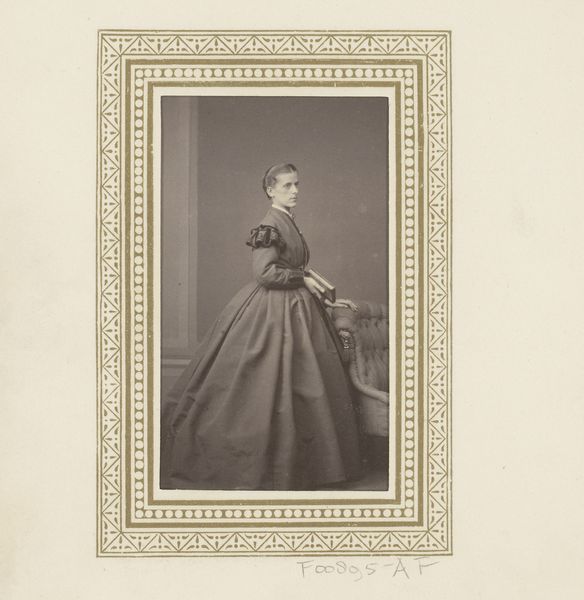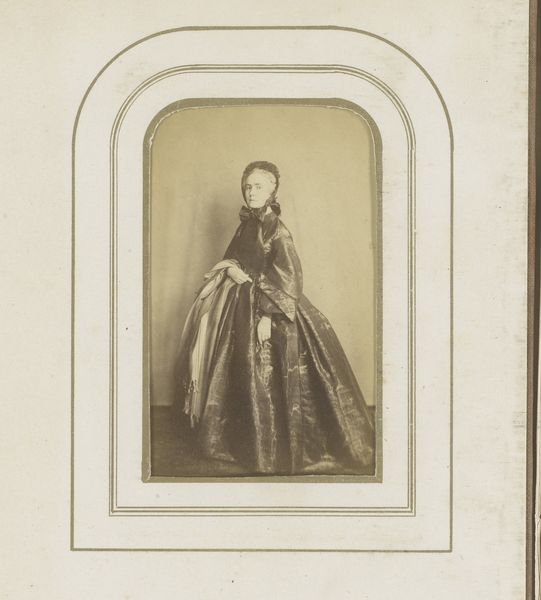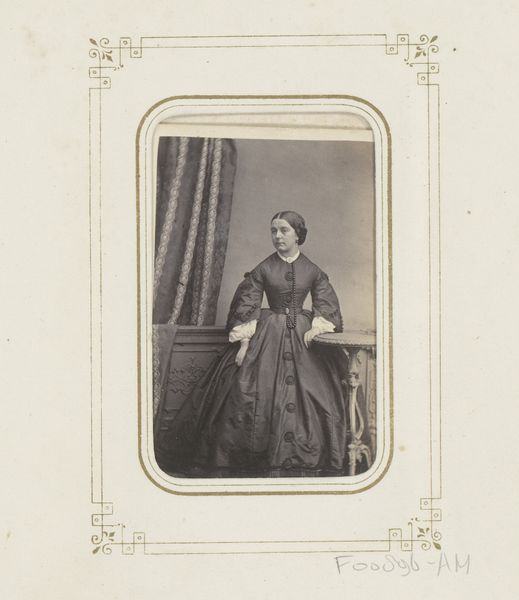
#
photo of handprinted image
#
table
#
aged paper
#
light pencil work
#
photo restoration
#
parchment
#
light coloured
#
historical photography
#
old-timey
#
19th century
#
columned text
Dimensions: height 107 mm, width 62 mm
Copyright: Rijks Museum: Open Domain
Editor: Here we have "Portret van een staande vrouw bij een tafel," made sometime between 1855 and 1865. The image itself has such a strange feeling - like looking back through time and memory, it’s presented like it is emerging from the past. What catches your eye about this photo? Curator: The framing is fascinating. The elaborate, almost classical border, set against the figure’s attire immediately reads as performative, a commentary on the rising middle class’s aspiration to appear ‘cultured’ or historically connected through visual means. It reflects the Victorian era’s obsession with representation and status. Do you notice how rigid the subject's pose is? Editor: I do, it’s so proper! She's so carefully placed next to the table with the book. It’s interesting you point out the framing; the woman’s clothing definitely reflects societal norms and expectations of that time. Curator: Exactly. Early photography, in this context, becomes a powerful tool for social mobility. It allowed families to create and disseminate an image of themselves aligning with prevailing ideas of respectability and upward mobility. The photograph, in essence, became a public declaration of status. The table, the book – all these props serve to reinforce that image. Editor: So, it's not just a portrait, but a carefully constructed image for a particular social purpose? Curator: Precisely! It asks us to consider not just who this woman *is*, but the statement that this photograph intends to make to its intended audience. The image says "we are not simply landowners or industrial owners but intellectuals too!" In what ways do you think such performances change nowadays, when representing status or affiliation? Editor: That's fascinating! I never thought about photography having that element. It gives the photo an entirely different dimension. Thank you! Curator: And it's through that contextual lens we can understand photography’s important public and political functions in the era it first emerged. Thank you!
Comments
No comments
Be the first to comment and join the conversation on the ultimate creative platform.
